Atlas has continually emphasized the importance of design in their snowshoes for the last 25 years. As we know, each snowshoe outing is different. Thus, it’s critical to choose the right snowshoes for the conditions, whether you’re on the trail or in the backcountry. Of the three series of snowshoes designed by Atlas, their All-Mountain snowshoes are the go-to for versatility on the trail ranging from powder to hard-packed conditions. Luckily, we had the opportunity to test and review Atlas’ Apex Mountain snowshoes in the Colorado Front Range’s spring snow.
This snowshoe is fitted with a range of features, including aggressive traction, the Wrapp Helix Binding with BOA closure, and durable decking.
Traction
First, let’s start with the aggressive yet versatile traction on this snowshoe. Most snowshoes made for versatility do not come with as aggressive of traction as the Apex Mountain (MTN). Typically, versatile snowshoes include only a toe and heel crampon to grip into the snow.
Altas’ Apex MTN snowshoes go much further. Not only does this snowshoe include aggressive X-Trac toe crampons and a serrated T-Frame heel crampon designed to get deep into icy snow, but the entire frame of the snowshoe is a serrated edge (Reactiv-Trac construction) that allows the snowshoe to conform to the terrain. Thus, the Reactive-Trac construction is beneficial for stepping on uneven terrain where it may not be possible to get your toe crampon fully into the snow. The serrated edge is also helpful for ascending/descending hills (up to 30 degrees) since the side traction will keep the snowshoe from slipping out from under you.
Read More: Why All Snowshoers Should Be Avalanche Aware (Even Beginners)
Also, the Apex MTN is built with spring-loaded suspension that keeps the snowshoe close to your foot. This design allows for deeper penetration of the crampons and foot control on uneven terrain. The spring-loaded suspension also prevents snow from flying up onto your pants when in deep snow.
The only downside of the crampon design is that it can be a little more conducive to snowball buildup than other snowshoes with aggressive traction. Since the X-Trac crampon is designed to scoop underfoot when walking in soft snow, the snow has an edge to build up under the snowshoe.
That said, we tested and reviewed the Apex MTN snowshoe in the worst type of snowball snow (spring snow, extremely wet, big grains), and it took about 30 minutes to build up small snowballs. Other brands of snowshoes that we’ve tested in similar conditions built up snowballs much quicker. If you are concerned about snowballs, you may spray an environmentally friendly ski wax or cooking oil on your crampons before a snowshoeing adventure.
Heel Lift
In addition to the toe crampon, heel crampon, and serrated design, the Apex MTN has a 19-degree heel lift. At first glance, the heel lift seems like a very odd thing to add to a snowshoe, but we’ve found them exceedingly useful.
When ascending steep hills, you can flip up the heel lift for additional support. The lift keeps your heel elevated when ascending. So, instead of standing on your toes going up the mountain, your foot is flat. This feature not only reduces the strain on your calf muscle but helps engage more of the snowshoe for enhanced traction.
Read More: Definitive Guide: How To Choose The Perfect Snowshoes For Your Needs
Binding
Another feature that stands out on the Atlas Apex MTN is the Wrapp Helix Binding with the BOA closure. If you are like me, you might be thinking that the BOA closure seems to be on everything! Usually, I’m partial to straps, like the Packflat binding on Atlas’ Apex BC snowshoe. But, I do actually like the BOA closure and Wrapp Helix binding on these snowshoes.
I applaud Atlas for being one of the first companies to integrate the BOA closure with their snowshoe binding. There is a reason this closure ends up on a multitude of outdoor gear. The BOA closure on most gear is easy to use, quick, and very durable. This reputation holds on Atlas’ Apex MTN snowshoes, too.
Getting the Apex MTNs on and off is a breeze. Just stick your foot in, turn the BOA to tighten it, pull the heel strap, and you’re good to go. Taking them off is as simple as popping the BOA closure up. It’s the easiest binding I’ve ever used on a snowshoe. And I don’t say that lightly, as I do really like simple strap bindings on other snowshoe models.

The BOA closure on the Wrapp Helix binding is incredibly easy to use, even with thick winter gloves. Photo: Paul Wowk
The Atlas Apex MTN snowshoe and Wrapp Helix Binding is an excellent option for day trips that include steep terrain and unpredictable snow. If you’re heading truly off the grid for a multiple-day adventure in backcountry snow, you may want to consider the Atlas’ Apex BC as an alternative. The Wrapp Helix binding of the Apex MTN can be difficult to pack down because of its size unlike the Packflat binding of the Apex BC.
Also, I have a little unfounded concern about the BOA closure breaking in the backcountry. Whenever my equipment has a unique design, I start to get concerned that I’ll have to go without the equipment if it breaks. However, I found an easy solution. Just carry an extra shoelace (or two) in your pack (or a complete snowshoe repair kit). If the BOA closure breaks, you can still tie your shoe to the snowshoes the old fashioned way. And, quite frankly, it’s probably a good idea to carry an extra shoelace in case your boot shoelaces break, or you want to tie something to your pack. They are worth their weight.
Decking & Flotation
The decking on the Atlas Apex MTN is their unique Infinity decking and urethane rockered footbed, which helps optimize surface area and is abrasion-resistant. The total surface area of the Atlas Apex MTN is 158 square inches. This surface area is narrower than other versatile snowshoes, but the snowshoe still provides adequate flotation.
However, if you typically spend a lot of time breaking trail in deep powder (more than 2 feet/61 cm), I’d recommend looking for a snowshoe with a wider surface area. You could also oversize these snowshoes for your weight to get better floatation, provided a size up is not too large for your snowshoeing gait. We always recommend trying snowshoes before you buy them, if possible.

During a test of the Atlas Apex MTN in 18 inches of fresh powder, I sank to about my lower-calf. Photo: Susan Wowk
In addition to the decking material and floatation, one of the other more recent additions to the Atlas Apex MTN snowshoe is the updated decal, a subtle graphic on the decking. If I’m going to be spending hours and hours on my snowshoes, I appreciate it if they look nice. So, I applaud Atlas for updating the decals to include more appeal than a solid color.
In fact, when talking with the graphics designer, she mentioned it is quite difficult to design a decal for a snowshoe. The reason is most people keep their snowshoes for 5 or 10 years, sometimes longer. So, we want the designs to be quite timeless. That said, a pleasant color scheme or a unique design is more enjoyable than looking at a drab black snowshoe. I’d recommend taking a look for yourself. I personally think these snowshoes strike the right balance with the black and grey decking and the orange powder-coated frame. They are pleasing to the eye.
Sizing & Weight
Atlas Apex MTN snowshoes are available in 25″ and 30″. Women-specific models are also available in 22″ and 27″. On average, the 25″ models provide adequate floatation in deep snow for weights up to 180 lbs (81 kg). The 30″ models can accommodate up to 235 lbs (106 kg) for floatation in deep snow.
However, the most important aspect of sizing is that the snowshoe binding fits your foot and boot size. If you are looking to pick up a pair, make sure to look over the sizing chart. The chart is beneath the snowshoe description and is a great starting point for choosing your size.
The weight of Atlas’ Apex MTN is a little over 4 lbs. This weight is slightly (and I mean slightly) heavy due to the traction system, particularly the serrated edges and BOA closure on the Wrapp Helix binding. Although, most aluminum-framed snowshoes with similar aggressive traction have similar weights. To get 0.5 lb or so lighter, you’ll have to go with plastic snowshoes or snowshoes with less traction.
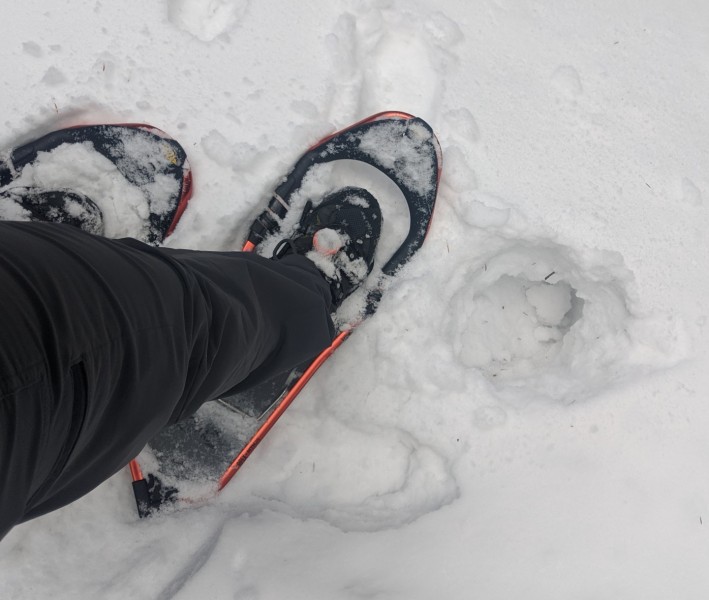
Our Atlas Apex-MTN testing was in a variety of conditions, including slushy, wet spring snow, and deep powder. Photo: Paul Wowk
Overall
So, to sum up, the Atlas Apex MTN snowshoes are a go-to for versatility, including steep terrain, flat trails, and deep snow. The Wrapp Helix binding with BOA closure, the X-Trac toe crampon, T-frame heel crampon, serrated edges (Reaction Trac construction), and Infinity decking work very well together to provide a seamless snowshoe experience.
Would you use the Atlas Apex Mountain snowshoes? What has been your experience? Please share your thoughts with us in the comments below.
Atlas Snow Snow Company provided our pair of Apex MTN snowshoes. As always, the views and opinions expressed in this article are entirely our own.
Read Next:
Why Use Snowshoes On Your Next Mountaineering Adventure
Gear Review: Atlas Race Snowshoes
How To Choose The Best Trail: Tips For Learning When You Need Snowshoes
Snowshoeing For Beginners: The First-Timer’s Guide




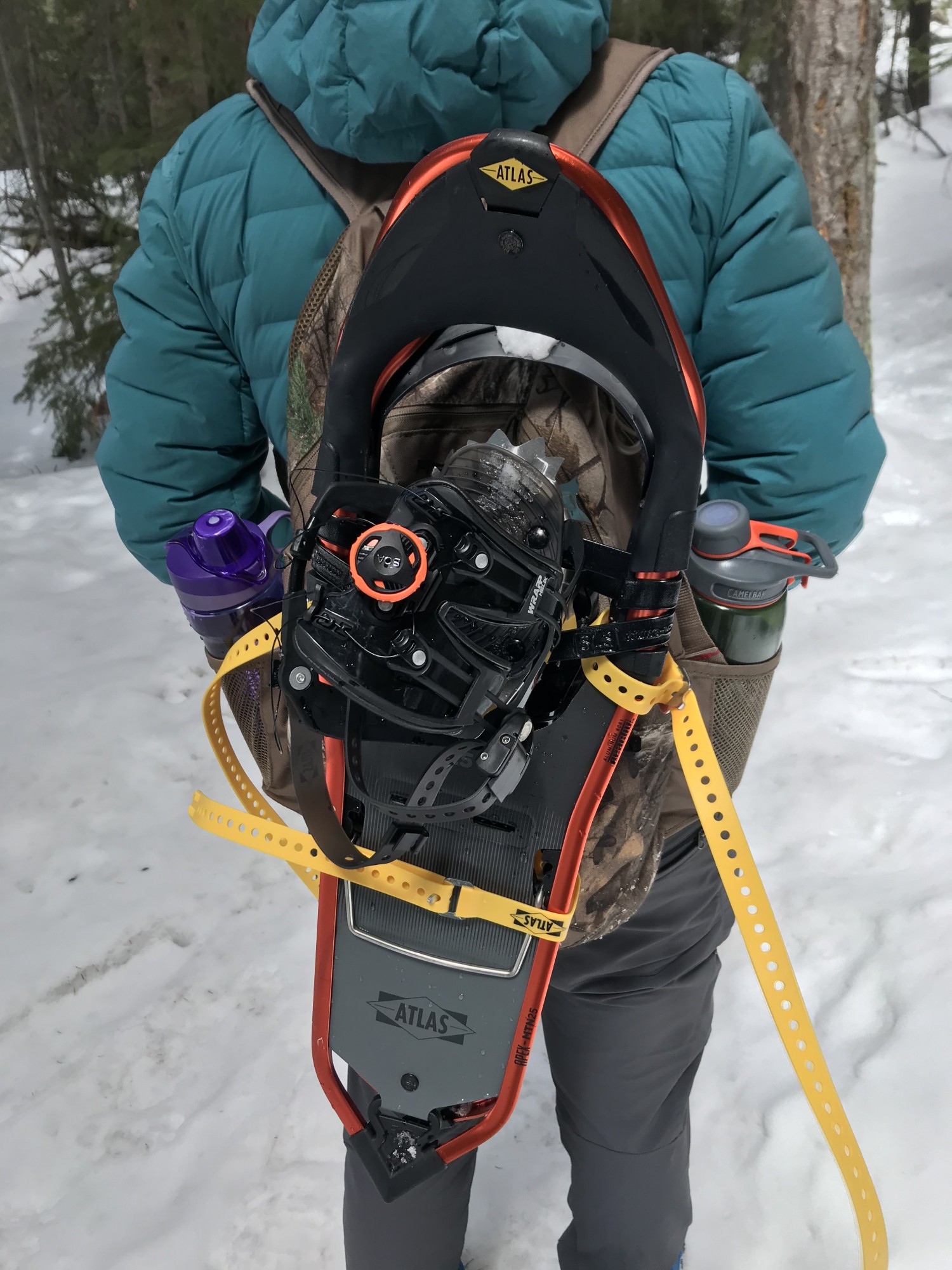

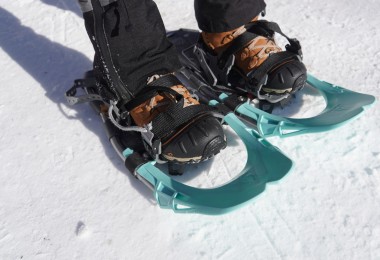
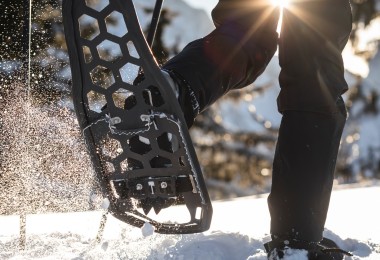
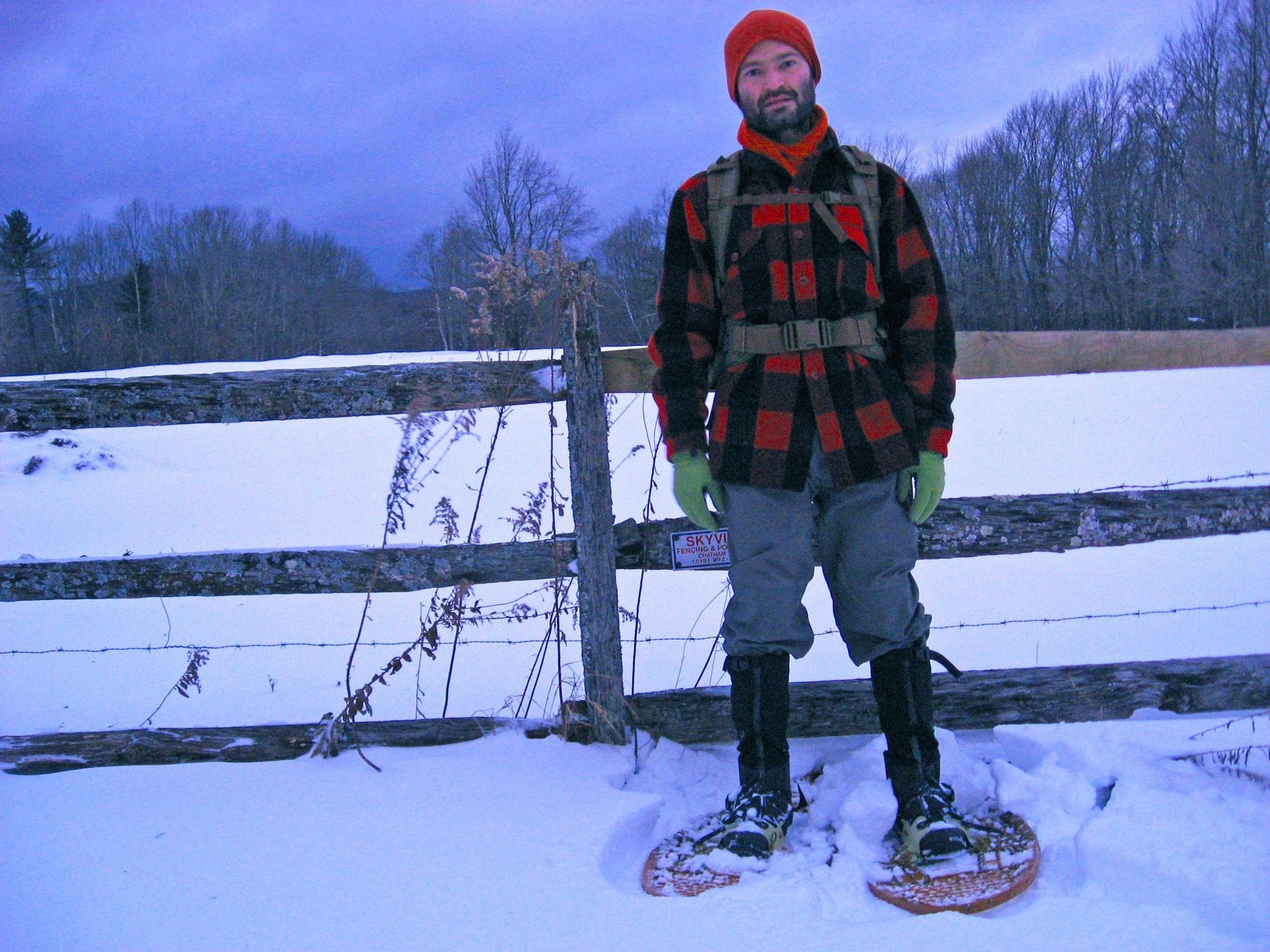


Leave a Comment